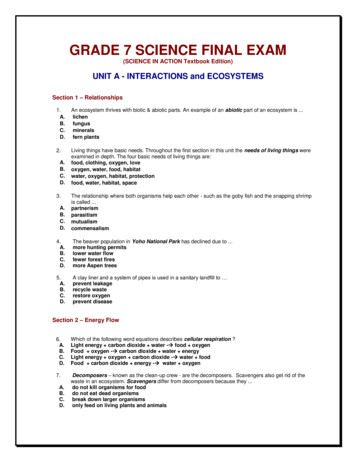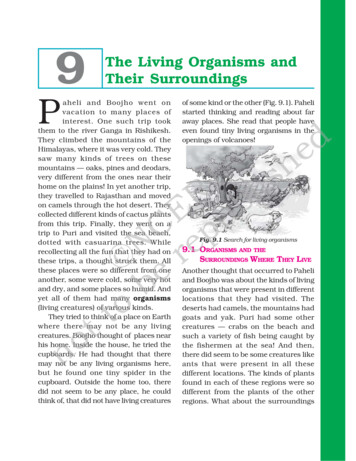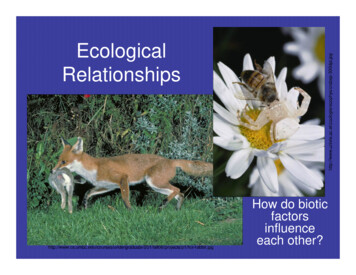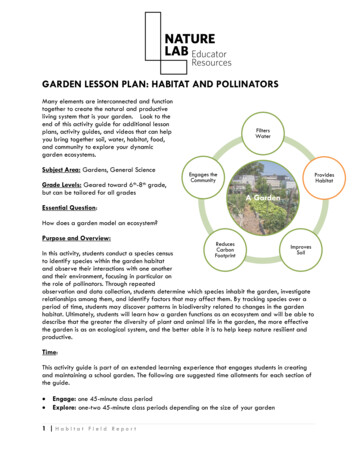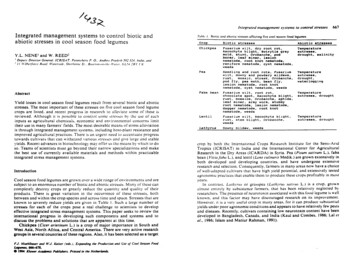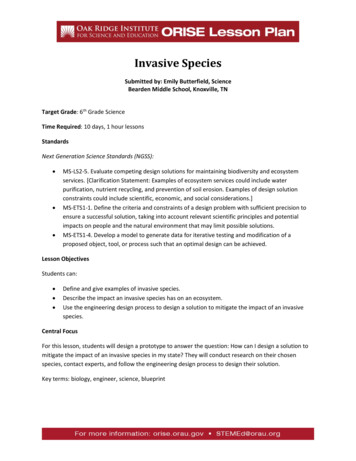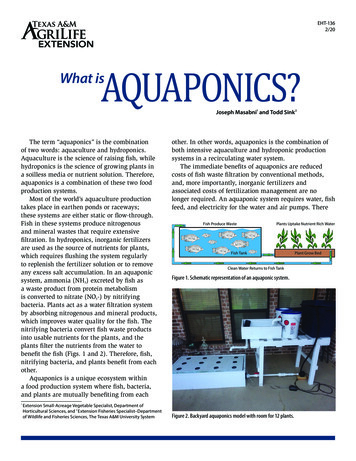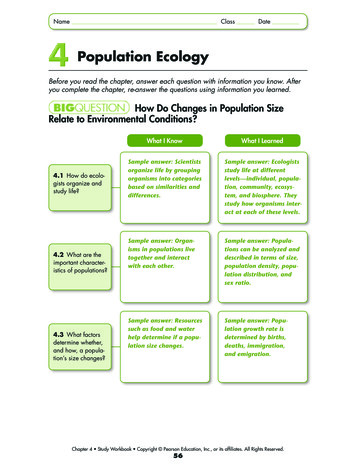
Transcription
Abiotic & Biotic FactorsAbiotic, biotic factors, introecosystems and long term plotstudy
Day 1:Warm Up: Write down a list of things you KNOW aboutBiologyLT: I can define Ecology and draw a model of Earth’sspheres.
NEW UNIT
Ecology!What do you think ECOLOGY is?ECO habitat or environmentDefinition: The branch of biology that dealswith the relations of organisms to oneanother and their physical surroundings
Ecologists
Earth is a set of interacting spheresYou have 15 MINUTES to research your assigned sphereand prepare to present to the class. Write importantinformation on your whiteboard.Table 1 & 7: LithosphereTable 2 & 6: AtmosphereTable 3: HydrosphereTable 4: BiosphereTable 5: Ecosphere
LithosphereThe outer part of the earth (Earth’s crust)
AtmosphereGases surrounding the earth or anotherplanet
HydrosphereAll the waters on earth’s surface (lakes, oceans,clouds)
BiosphereGroup of ecological systems on earth (everythingalive!)
EcosphereBiosphere ofearth.emphasizesthe interactionbetween living andnonlivingcomponents
Day 2:Warm Up: List at least three of earth’ssphere and explain what they areLT: I can explain the difference betweenabiotic and biotic factors.
AbioticNOT alive- Abiotic factors can have a huge impact on anecosystem- Discuss: What are some abiotic factors that are rightoutside our classroom?- Ex: water, wind, rocks etc.
BioticALIVE- Anything that is alive or was once alive- Discuss: what are some things that are biotic factorsthat are right outside our classroom?- Ex: students, grass, bugs, birds etc.
List all the ABIOTIC and BIOTIC factors in the ecosystem
Abiotic and Biotic Factors WS
Day 3:Warm Up: What is one abiotic factor that is in your yard athome? What is one biotic factor?LT: I can identify the different characteristics of life.
Discussion: What makessomething ALIVE?
Rotations- Visit stations around the room- Record observations- Classify each item as alive or notalive
7 Characteristics of LifeLiving Things 1.2.3.4.5.6.7.Are composed of cellsHave different levels of organizationUse energyRespond to their environmentGrowReproduceAdapt to their environment
1. Living Things are Composed of Cells
2. Living Things have different levels oforganization
3. Living Things Use Energy
4. Living Things respond to their environment
5. Living Things Grow
6. Living Things Reproduce
7. Living Things Adapt to their environment
CER - Is abiotic or biotic?Write a CER explaining why your chosen object isabiotic or biotic. Remember to include THREE pieces of evidenceand reasoning that ties in with EACH piece of evidenceObject options:-FireSeaweedA bird’s egg (ALL parts of the egg)A pineconeA piece of gravelYour cell phoneA soccer ball
Day 4: Field StudiesWarm Up: What are some things you need to considerwhen planning an experiment outside?LT: I can explain important elements of field studies andset up a field study plot.
Quiz 1: Abiotic and Biotic Factors
Discussion: What do ecologists study?Discussion: How do ecologists set upexperiments?
Long Term Plot Study Intro-Choose location of plotDecide what factors you are going to observe/testDecide how long you are going to study that areaMark your plot.BE PRECISEObserve plot over timeKeep as many factors as you can CONSTANT (timevisited, protocol etc.)- Record observations and collect DATA
Expectations for outdoor lab classes:-Always be able to see Ms. PerkinsNo runningNo yellingDon’t mark down plot markersStay on taskBe on your best behavior, or we will not continue to gooutside
Pre-Lab Questions
Initial Observation Outside:- Set up plot- Do initial observation
Day 5: Plot Observation 2Warm Up: What are some important elements to considerwhen planning and setting up a field study?LT: I can make observations about abiotic and bioticfactors in my study plot.
Observation 2: Abiotic and Biotic Factors- Take Field Journal, pencil, and something to write on- Review outdoor lab expectations- Today we are focusing on Abiotic and Biotic Factorsthat are in our plots!
Expectations for outdoor lab classes: - Always be able to see Ms. Perkins - No running . - Be on your best behavior, or we will not continue to go outside. Pre-Lab Questions. Initial Observation Outside: - Set up plot - Do initial observation. Day 5: Plot Observation 2 Warm Up: What are some important elements to consider when planning and .
